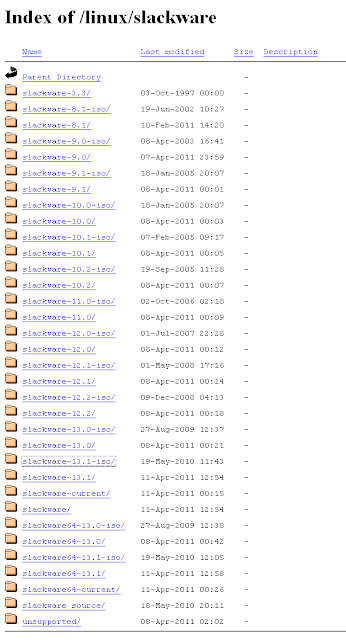Yes, I know, I could have backed up my Slack install, moved the partitions, then dumped the Slack install back on exactly as it was. But maybe the shameful truth is, that would mean I'd have to find some other excuse to configure Slack into oblivion.
Sadly, even with Slack, there is indeed a point to be had where you can't think of anything else worth changing. Let's get to that 'Can't find anything else worth changing' point yet again, shall we?
My disk currently has a 30 G partition infested with Windows XP. It also has a Linux swap partition and one huge partition for Slack. I know I've babbled in the past about partitioning Linux' portion of a drive into several segments so that one can mount different sections of the OS to different partitions, but... I'm thinking that that approach is only really valuable if you're mounting to different physical HDDs.
In my experience, the only result of splitting the Linux install between several partitions on the same HDD is that it greatly increases the likelihood that one of the partitions will eventually start screaming about being out of free space, while the others point and laugh. If there's actually a reason to risk such playground squabbles when the playground is one lone HDD, please let me know.
On to the process of getting an installation DVD:
I downloaded the install disks from the official Slackware website. From the link I just offered, I chose the country I'm in and chose a server that's both fast and nearby. This is the result:
Although this is a 64-bit computer, I'm still too chicken for the excitement of installing 64-bit applications. 32-bit it is. I clicked on slackware-13.1-iso/, and this is the result:
Curiously, I don't see a file named slackware-13.1-install-dvd-iso. I figured, that's okay; I'll make my own. (I later figured out that the DVD iso is available on some servers and not others.) I downloaded the following files:
slackware-13.1-install-d1.iso
slackware-13.1-install-d1.iso.md5
slackware-13.1-install-d2.iso
slackware-13.1-install-d2.iso.md5
slackware-13.1-install-d3.iso
slackware-13.1-install-d3.iso.md5
slackware-13.1-source-d4.iso
slackware-13.1-source-d4.iso.md5
slackware-13.1-source-d5.iso
slackware-13.1-source-d5.iso.md5
slackware-13.1-source-d6.iso
slackware-13.1-source-d6.iso.md5
Then I used md5sum.exe to check the validity of the Slack install .iso files. (See md5sum.exe's website for detailed instructions.) Cygwin can also check the files, apparently, and it looks like a fun toy, but it'll take longer (by far) to install and use than md5sum.exe.
What I did, and by the way, THIS DIDN'T WORK: I wanted to burn to a DVD, not 3-6 CD's, so I turned to the program InfraRecorder. InfraRecorder starts by showing the following screen:
I selected Data Disc (DVD). I hunted down the directory with the Slackware .iso files. I dragged-and-dropped each of the .iso files into the (originally blank) lower pane:
"Actions -> Burn Compilation -> to a Compact Disc" told the program to start burning all six .iso files to a blank DVD.
Well, what I ended up with was a DVD... with six .iso files on it. *sigh*
It would have worked beautifully if I'd just bothered to burn my three CDs and have done with it. (The first three Slackware .iso images contain the actual operating system install files; the last three contain source code, and the installer doesn't even offer to put those on the computer. So, there's actually no reason to download the last three because even if you do want the source code, you can always download it after install.)
Around in circles a bit, I finally decided to change plans entirely. I pulled down iso files of the first three Slackware disks for their latest version, 13.34. I wiped out the Windows parititon entirely, so all I have on the computer is a 3 gig Linux swap partition, and after that, a great big Linux ext4 partition.
This doesn't mean that this computer won't be running Windows at all. It will. I'll get to that much later in the config process, though.




No comments:
Post a Comment